Try UHMW,it's easly machined and very slippery and fairly cheap.Yes your correct! I've already noticed the metal getting caught in the cloth material I used. Will the delrin wear on the ways?
-
Welcome back Guest! Did you know you can mentor other members here at H-M? If not, please check out our Relaunch of Hobby Machinist Mentoring Program!
You are using an out of date browser. It may not display this or other websites correctly.
You should upgrade or use an alternative browser.
You should upgrade or use an alternative browser.
Little Lathe Improvement.
- Thread starter LX Kid
- Start date
- Joined
- Sep 28, 2013
- Messages
- 4,306
I had a bit of a problem with the chuck/back plate mateing. The thru-hole of the back plate is larger than the hole on the chuck so I as unable to make a step on it to fit into the back of the chuck. I had to make a stepped sleeve to mate them before marking and tapping the back plate. My tolerances were good and had to mallet the two together onto the sleeve.
I don't really understand what your saying. The back plate register for radial runout has nothing to do with the chuck through hole. Not even a little bit. The back of the chuck should have 2 lips - one from through hole to the recessed back of the chuck, the other from the recessed back of the chuck to the non-recessed back of the chuck. The second transition/ lip is what interfaces with the radial register on the back plate. The non-recessed back of the chuck is what registers on the flat outer part of the back plate (the axial register). The chuck through hole and recessed back of the chuck should not touch the back plate at all. If you're joining the two together using a sleeve in the chuck through hole then you've done it completely wrong. It may sort of work and reduce the size of work you can fit through the chuck at best and it may do all of that and cause axial runout at the worst.
there are lots of how tos and videos on making chuck back plates (I think I've posted a couple on here), I'd strongly recommend reading/ watching them so you can see what's going on.
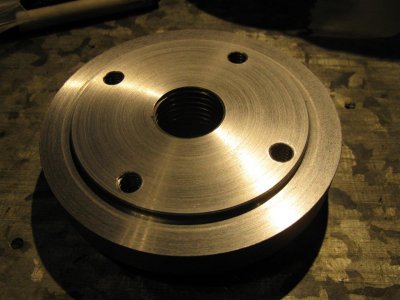
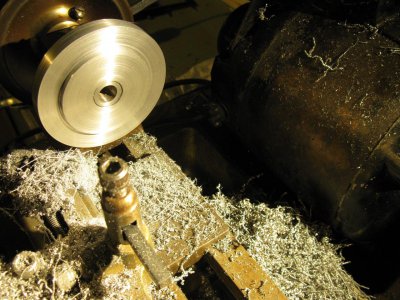
- Joined
- May 26, 2015
- Messages
- 762
I knew I should have taken pics before I assembled it. The hole in my backplate, for example, is about 3" and the stepped hole in the back of the chuck is about 2 7/8 inch. There is no way to cut a step in the backplate to step down to the smaller size of the step in the chuck. So I had to make a stepped sleeve to be able to join the two in order to make everything centered. Does that make any sense?
The pic is where I was test fitting, not a completed work, just to see how the sleeve would fit to the backplate hole. The center portion is "not" a machined part of the backplate but is a sleeve inserted into it.
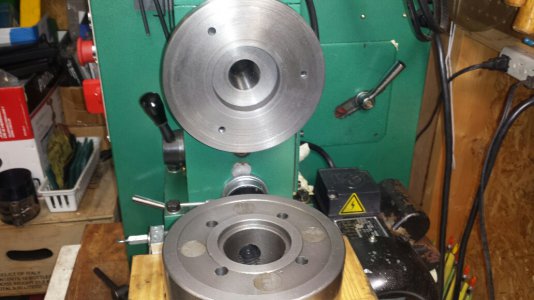
The pic is where I was test fitting, not a completed work, just to see how the sleeve would fit to the backplate hole. The center portion is "not" a machined part of the backplate but is a sleeve inserted into it.

Last edited:
- Joined
- Sep 28, 2013
- Messages
- 4,306
I think I understand what you did now, but not why your back plate had such a huge hole in it. You're not talking about the spindle flange on the machine that you bolt chucks to are you? Was the back plate something that you bought separately? Most back plates, whether threaded, bolted or whatever, come partially machined so you have to cut your own registers but I've never heard of one for that size chuck that is not much more than a ring of material.
- Joined
- May 26, 2015
- Messages
- 762
Your correct. I bought the backplate from Grizzly along with a faceplate. The faceplate has to be returned because the bolt up is too small for my spindles bolt up. My lathe didn't come with all the accessories. I bought at an estate sale, new in crate, but a lot missing. I could have saved a lot of money had I ordered it new from Grizzly. Now I have about $3k invested. "Now I'm just trying to make some tasty chicken salad out of chicken manure!" If you git my meaning?
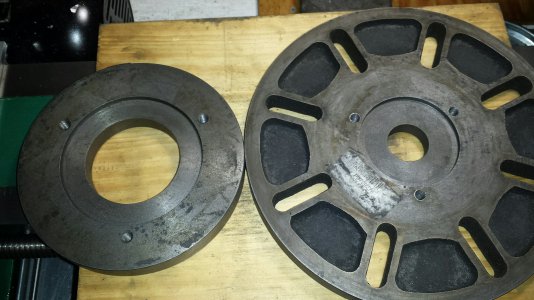

Last edited:
- Joined
- Sep 28, 2013
- Messages
- 4,306
oh right, I see now, what a pain. Well, as long as it works and you have acceptable runout, who cares? As for money, well at least you have something at the end of it that you can use to make more things. Better than a lot of other hobbies, like golf or gambling.
- Joined
- Nov 27, 2015
- Messages
- 603
Look at what Stefan Gotteswinter did with his 9x20 lathe. I think he has a very similar chuck, which he uses to his advantage.
 Steve Shannon, P.E.
Steve Shannon, P.E. 
 Steve Shannon, P.E.
Steve Shannon, P.E. 
- Joined
- May 26, 2015
- Messages
- 762
Look at what Stefan Gotteswinter did with his 9x20 lathe. I think he has a very similar chuck, which he uses to his advantage.
Steve Shannon, P.E.

Yes he has done a lot of nice work! Thanks for the link.
- Joined
- May 26, 2015
- Messages
- 762
I did a centering test on my chuck, about two inches out, using a 1/2" pin and got it down to .0005" and I'd say that will work for me. First time I've ever centered a 4-jaw so it took me a while. Here's a pic of the finished chuck mounting. I had to cut about 1/8" off the four bolts so they weren't coming thru. I put my 3-jay back on the lathe. Dang! That 4-jaw is 30lbs heavy.
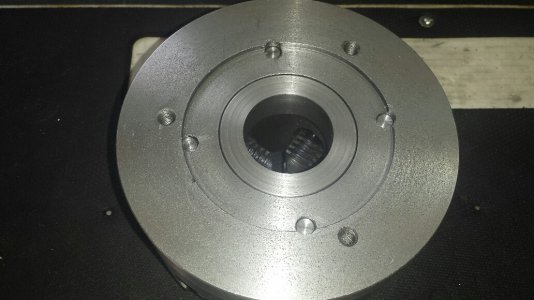

Last edited:

